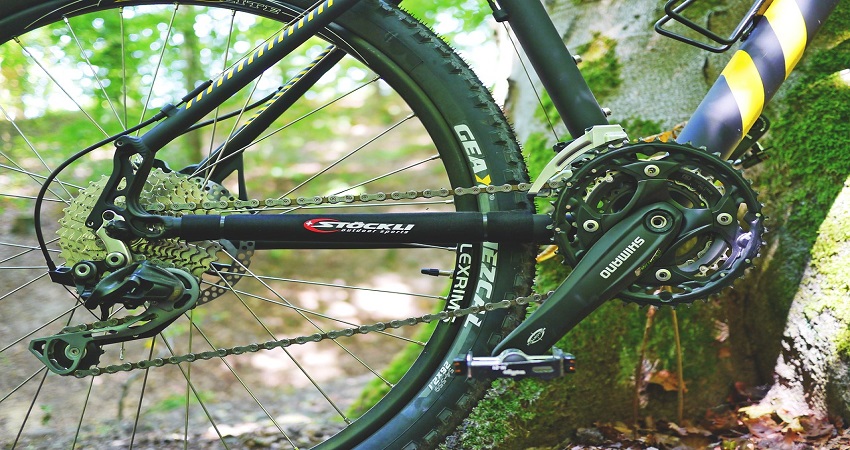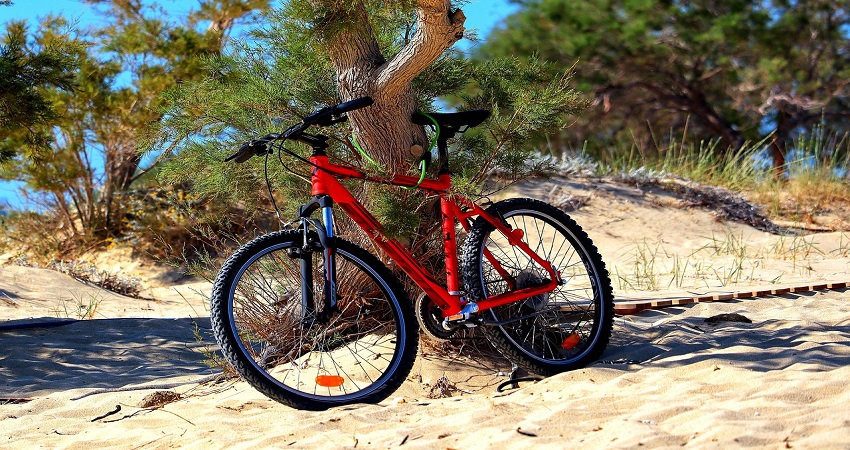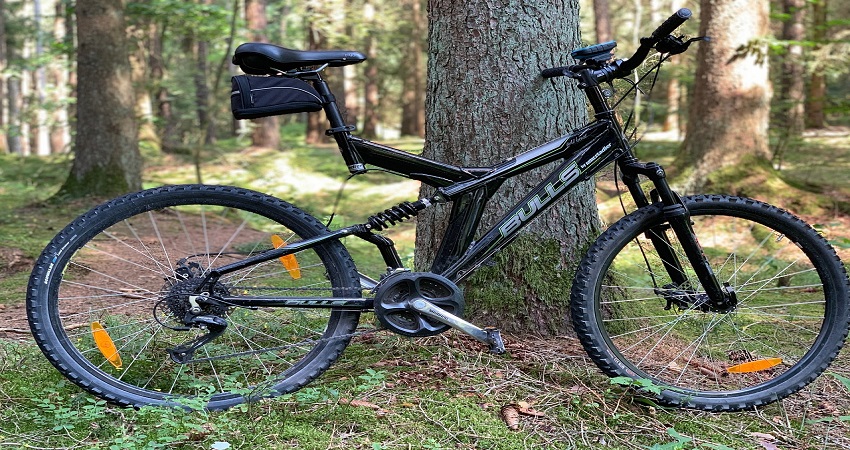Mountain bike chains are not universal; they come in different sizes, brands, and models.
Different Types Of Mountain Bike Chains
When it comes to mountain bike chains, it’s essential to understand that they are not all created equal. Different bikes require different types of chains, and having the right chain can greatly impact your bike’s performance and overall experience. In this article, we’ll explore the different types of mountain bike chains and what sets them apart from one another.
Speed-specific Chains
One crucial factor to consider when choosing a mountain bike chain is the number of speeds your bike has. Speed-specific chains are designed to work efficiently with a specific number of gears. For example, if your mountain bike has a 10-speed drivetrain, you’ll want to opt for a 10-speed chain. These chains are engineered to provide smooth and precise shifting, ensuring optimal performance.
If your bike has a different number of speeds, such as 9 or 11, be sure to select a chain that corresponds to your bike’s drivetrain. Using the wrong speed-specific chain can lead to poor shifting, decreased efficiency, and potential chain damage.
Narrow Vs. Wide Chains
Another key consideration when it comes to mountain bike chains is the width of the chain. Chains come in varying widths, with narrow and wide options available. The width of the chain is determined by the number of cogs on the cassette, as well as the spacing between them.
Narrow chains, often referred to as “11-speed chains,” are commonly used on bikes with drivetrains that have 11 or more gears. These chains are designed to fit between narrower cogs, allowing for a more precise fit. They are lightweight and provide excellent shifting performance.
On the other hand, wide chains, such as “9-speed chains,” are meant for bikes with drivetrains that have fewer gears. These chains are designed to fit wider cogs and provide reliable shifting and durability.
Single-speed Chains
While many mountain bikes have multiple gears, there are also those that feature a single-speed drivetrain. Single-speed chains are specifically designed for bikes with only one gear. These chains are usually wider and stronger compared to multi-speed chains, as they don’t need to shift between gears. Single-speed chains are known for their simplicity and resilience.
It’s crucial to ensure you choose the correct chain for your bike’s drivetrain. Using the wrong chain can lead to poor shifting, premature wear, and potential damage to other components.
In conclusion, different types of mountain bike chains cater to specific drivetrain setups. Speed-specific chains, narrow vs. wide chains, and single-speed chains each have their designed purpose and are not interchangeable. By understanding the differences and selecting the right chain for your bike, you can optimize performance, efficiency, and overall riding experience.
Compatibility With Mountain Bike Drivetrains
Mountain bike chains are not universal, as compatibility can vary depending on the drivetrain system. It’s crucial to ensure the chain matches the components to prevent issues with shifting and performance. Always check the compatibility with your specific mountain bike drivetrain to ensure smooth and efficient rides.
Understanding Different Drivetrains
Mountain bike drivetrains come in a variety of configurations, and understanding the differences is crucial when it comes to choosing the right chain for your bike. The drivetrain refers to all the parts involved in transferring power from the pedals to the rear wheel, including the chain, cassette, chainrings, and derailleurs.
There are two main types of drivetrains commonly found on mountain bikes:
- 1x drivetrain: This setup features a single chainring at the front and a wider range cassette at the rear. One of the advantages of a 1x drivetrain is its simplicity, as it eliminates the need for a front derailleur and reduces the chance of dropped chains.
- 2x or 3x drivetrain: These setups have two or three chainrings at the front and a narrower range cassette. They offer a wider gear range, which can be advantageous for riders who tackle a variety of terrain.
Compatibility Issues Between Chains And Drivetrains
When it comes to the compatibility between chains and drivetrains, it’s important to choose a chain that is specifically designed for the type of drivetrain you have. The spacing between the chainrings and the cassette cogs differs between 1x and 2x/3x drivetrains, and using the wrong chain can lead to poor shifting performance, increased wear on the drivetrain components, and even chain skipping or dropping.
In addition to the drivetrain type, it’s also essential to consider the number of speeds in your drivetrain. Chains are designed to work with a specific number of gears, such as 10-speed or 12-speed. Using a chain that is not compatible with your drivetrain’s speed can result in compatibility issues and compromised performance.
Furthermore, different brands may have their own specific chain designs and technologies, which further affect compatibility. It’s advisable to stick with the same brand as your drivetrain components or consult the manufacturer’s guidelines to ensure compatibility. For example, Shimano chains are typically recommended for Shimano drivetrains.
Lastly, it’s crucial to maintain your chain and drivetrain properly. Regular cleaning and lubrication can help prolong the lifespan of your chain and ensure optimal performance. Additionally, replacing your chain before it becomes excessively worn can prevent premature wear on other drivetrain components.
Factors To Consider When Choosing A Mountain Bike Chain
When it comes to your mountain bike’s performance, the chain plays a crucial role. A high-quality chain ensures smooth gear shifts, efficient power transfer, and overall reliability on the trails. However, not all mountain bike chains are created equal. To make an informed decision and choose the right chain for your bike, there are a few key factors to consider:
Chain Length
Ensuring the correct chain length is essential for optimal performance and safety. A chain that’s too short can result in inadequate shifting and potential damage to the derailleur or chainstay. On the other hand, an excessively long chain can lead to poor shifting and increased chain slap. To determine the right chain length, follow the manufacturer’s guidelines or consult a professional bike mechanic.
Durability And Maintenance
A durable chain is vital for lasting performance and minimal maintenance. Look for chains made from high-quality materials such as hardened steel or alloys. These chains are more resistant to wear and stretching, ensuring longevity. Additionally, consider a chain with quick and easy maintenance features, such as a quick-link or master link that allows for easy removal and cleaning.
Weight And Performance
Weight plays a significant role in your bike’s overall performance. A lighter chain can enhance acceleration and agility, particularly for riders focused on speed and racing. However, it’s crucial to find a balance between weight and durability, as ultra-lightweight chains may sacrifice longevity. Consider your riding style and priorities when choosing a chain with the ideal weight-performance ratio.
Making an informed decision about your mountain bike chain is essential for enjoying a smooth and efficient ride. Take into account factors such as chain length, durability, maintenance requirements, and weight-performance ratio. By choosing the right chain, you can enhance your biking experience and ensure reliable performance on any trail.
Tips For Proper Chain Maintenance
Proper chain maintenance is crucial for the smooth operation and longevity of your mountain bike. Regular cleaning, lubrication, and check-ups can significantly extend the lifespan of your chain, improve your bike’s performance, and prevent potential breakdowns. In this section, we will explore the essential steps for maintaining your mountain bike chain.
Cleaning And Lubrication
Cleaning your mountain bike chain is the first step to maintaining its optimal performance. Regularly removing dirt, grime, and excess lubrication from the chain will prevent friction and potential damage.
Here are some key points to keep in mind:
- Start by wiping the chain with a clean rag to remove loose debris.
- Next, use a chain cleaning tool or a toothbrush to scrub the chain, ensuring you reach all the nooks and crannies.
- Rinse the chain with water or use a mild degreaser to remove any stubborn dirt.
- Once the chain is dry, apply a suitable lubricant. It’s essential to choose a lube specifically designed for bike chains, as it will provide optimal lubrication and minimize friction. Be sure to follow the manufacturer’s instructions for application.
- After applying the lubricant, let it sit for a few minutes to penetrate the inner parts of the chain. Finally, wipe off any excess lubricant with a clean rag.
Checking For Wear
Regularly checking your mountain bike chain for wear is crucial to prevent unexpected chain failures while riding.
Here are some steps to follow when inspecting your chain:
- Place your bike on a stand or elevate the rear wheel off the ground for easy access.
- Using a chain wear indicator tool, measure the chain’s elongation. If the gauge indicates significant elongation, it is a sign that your chain may need to be replaced.
- If you don’t have a specialized tool, you can also inspect the chain visually. Look for any signs of rust, corrosion, or stretched links. A stretched chain may skip or jump on the rear cogs, indicating it needs immediate attention.
Replacing A Worn Chain
When your mountain bike chain shows significant wear, it is crucial to replace it promptly. Continuing to ride with a worn chain can lead to increased wear on your drivetrain components and potentially result in costly repairs.
Here’s how to replace a worn chain:
- Shift your bike into the smallest chainring and the smallest rear cog to relieve tension on the chain.
- Using a chain tool, break the chain at any link. Make sure to keep the chain pin aligned with the chain.
- Remove the old chain from the bike by pulling it through the rear derailleur.
- Install the new chain by threading it through the rear derailleur and reattaching it with a quick link or a chain pin.
- Ensure the chain is properly tensioned. There should be a slight amount of slack when the bike is in the smallest chainring and smallest rear cog.
By following these tips for proper chain maintenance, you can maximize the lifespan of your mountain bike chain and enjoy smoother, more reliable rides. Regularly inspecting, cleaning, lubricating, and replacing your chain when necessary will keep your bike in top shape and minimize the risk of chain-related issues. Remember, a well-maintained chain translates to a better overall biking experience!
Frequently Asked Questions For Are Mountain Bike Chains Universal?
Are Mountain Bike Chains Universal?
Mountain bike chains are not universal. There are different chain sizes and widths to fit different types of bikes. It is important to choose a chain that matches the specific drivetrain components of your mountain bike for optimal performance and smooth shifting.
Conclusion
Finding the right mountain bike chain can be a daunting task, but it’s essential for optimal performance. While chains may seem similar, it’s crucial to understand that they are not universal. The compatibility of a chain depends on factors like the number of gears, brand, and bike type.
By considering these aspects and consulting with professionals, you can ensure you have the right chain for your mountain bike, enhancing your riding experience. Invest in the proper chain and enjoy a smoother and more efficient ride.



